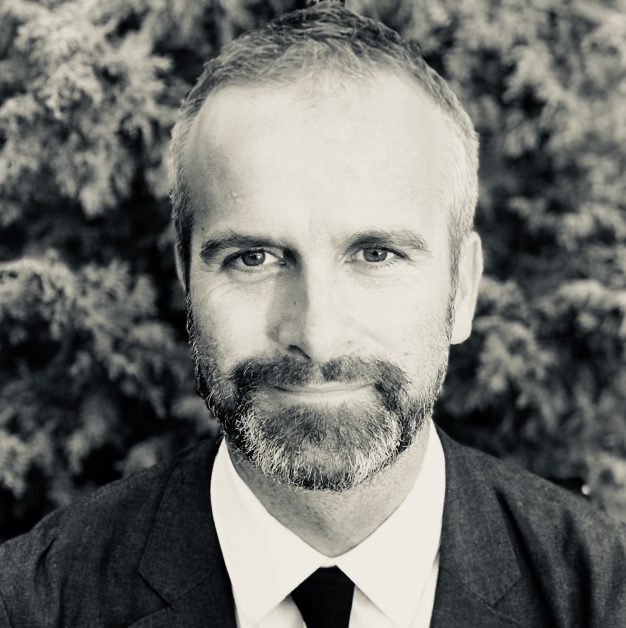
The urban development expert in you and me
Jens Aerts will give his keynote presentation at the Child in the City International Seminar in Antwerp next month. His keynote is titled ‘Shaping a sustainable urban future for and by children’. In this interview, Aerts explains past and present challenges of urban planning. He also argues there is an urban development expert in all of us.
Jens Aerts is as an Urban Planning Specialist. He currently supports UNICEF in the development and implementation of its Global Urban Strategy. Aerts is the author of the recent UNICEF publication ‘Shaping urbanisation for children, a handbook on child-responsive urban planning’. He is also committed to similar advisory work that bridges children’s well-being and sustainable urban development, such as the upcoming Street for Kids program for the Global Designing Cities Initiative.
As an urban planning specialist, what have been some highlights and challenges you have experienced in your role?
As cities will contain 60% of the world’s population in 2030 and all future demographic growth is an almost purely urban issue, an urban planning specialist might think of a great future of the profession ahead. But while the scale, pace and complexity of urbanization comes with enormous challenges, there is a striking lack of urban planning capacity where urbanization is still happening, it explains why 300 million children still live in slums, suffering from multiple deprivations. This number will only grow in dense city centre slums but also in low-density, fragmented sprawling urban expansions.
Against the backdrop of these challenges, I am more convinced that urban planners will play an important role if not only building upon the technical, rational and scientific aspect of their profession. They also need to invest in their process capacity to facilitate complex urban transitions to happen in society – whether they are about low-carbon solutions, circular economy or social equity. A highlight is a push to co-design, innovate and accelerate implementation with other stakeholders, especially the unusual ones. Amongst child development and health specialists, for example, I see a growing awareness that the urban built environment is a key determinant in contemporary childhoods, with new kinds of vulnerabilities in terms of environmental health issues, spatial isolation and physical unsafety. I see these new windows of collaboration as game-changers for our profession, to invest in joint research and advocacy, but also to develop policies and investment programs together.
How did you get involved in children’s well-being and sustainable urban development, and why do you stay?
Just like most architects, engineers and other built environment specialists that graduated in the early nineties, there was a strong emphasis in our studies on the urban form, the dynamics of globalization and prosperous economies, but also a growing awareness on environmental degradation and climate change. While research and practice in sustainable urban development consistently developed in Europe, I cannot think of any major stream of work on people-centred planning, or even less one focusing on children.

In Brussels, I worked a lot on public space, mobility and neighbourhood renewal projects. That experience made me aware that a city is about people and their opinions in the first place and allowed also to experiment with various forms of community participation and new urban governance structures. Later on, I was involved in the drafting process of the New Urban Agenda, a major international framework to be presented in 2016 at Habitat III, the most important urban planning conference only taking place every 20 years. Being a blueprint for the future urbanization and needed upgrading of existing cities, this global agenda highlighted very strongly the importance to make cities for all. In the same period, I became a parent and I was so shocked to realize cities are not made for children and strolling parents at all. It is a cocktail of that personal frustration being an urbanite and the professional indignation that explains my involvement today, to turn my own profession upside down but also to build bridges with other disciplines in order to do better and faster together.
How has the cross-section of practice, policy and research changed in the past 5 years? What do you predict will happen in the next 5 to 10 years?
In any domain, there is always interaction in any domain between practice, policy and research. What is more interesting is how these interactions between different domains change and which ones are dominantly influencing others. Change does not happen in 5 years, but rather crystallizes in 10 or 15 years cycles, that allow new ideas and insights to be brought in from outside a discipline, to be assimilated and mainstreamed.
Take the example,Barcelona, a city where I lived and worked. Barcelona has a powerful tradition in planning a compact city and its collective infrastructure. In the nineties after the dictatorship, the regained democracy spurred into a rediscovery of the city center and explains the focus on social infrastructure, public space design and urban economies. 15 years later, knowledge from bioscience and climate science led to investments in green infrastructure and eco-systems on metropolitan and district level. Currently, innovations in urban policy mark a third era in the Barcelona model, rethinking democratic processes and embracing community-based planning in all its dimensions.
I believe that in the near future interdisciplinary work on public health, eco-systems, city governance and spatial planning will grow, to create the right contexts in which the right technological innovations can scale up and have a real impact on all aspects of sustainability: equity, environmental responsibility and economic strength. Youth will take the lead in this complex thinking, but as cities are mostly ageing it is important to seek traction for a multi-generational agenda.

What are some of the ways people from your field are making a difference in the world?
Within the field of participatory city planning and architecture, the work of Alejandro Aravena and Kounkuey Design Collective are very inspiring. They work with limited resources in the Global South and understand the scale and pace of the problem, but also use the intelligence of communities in the design process.
But in general, I would say that often people outside the field change the game, similar to innovation in expert domains happens due to influence from other domains. Outsiders bring in the needed oxygen to change a discipline. The most famous example is Jane Jacobs who brought down New York’s powerful master builder Robert Moses and with him the legacy of car-oriented, top-down and male-oriented modernist planning half a century ago. Jacobs has been rightfully dubbed the most influential urbanist but let us not forget that she is not really an urban planner actually and something she herself stated. Being a talented journalist from Canada, she influenced the urban planning discourse in the US as an outsider, strategically fueling activism and the public discourse, and calling new urban planners to develop new practices that include community participation.
Working a lot on road safety and sustainable mobility, I am also moved by the fact that so many champions in this area took up the challenge to address the major cause of death amongst adolescents because of their own loss of children, family members or relatives. Also good, “crazy” local politicians that stand close to their community change the way how cities are planned, addressing traffic fatalities, urban violence, pollution, poverty and children’s exclusion from decision making.
And in all cases, children and youth also play a significant role, like the Climate for Youth movement and other community-driven campaigns that have been instrumental in promoting the need for an ambitious urban planning agenda.
What is one piece of practical advice you would give to someone interested in making their city child-friendly and more sustainable?
Make a powermap to know who is influencing and who is actually in charge of managing the city. With them develop strategies for change in three dimensions: data and evidence to build the case and monitor change; participation with children and communities to create the basis for change and to start pilots; policy change in terms of spatial planning and financing.
If there was one key message that you would like delegates to take away from your presentation, what would it be?
In all of us, there is a child development and an urban development expert. I would not say there is a child in us. No, we are now adults and should act as responsible adults, being conscious of our privilege that we have the right to vote and freedom in our choices. But we should definitely look at the child in us that we used to be, as a mirror for us adults to leave the seminar knowing what we will do our practice that focuses specifically on children. There are so many children, young people and communities, who are more tech and eco-savvy than we are. They use their time and knowledge to think and do better for their neighbourhood and city. We should work with them and ensure children are included. It is five to twelve: the planet is almost burning, and children feel the heat the most.
Click here to read part 2 of our interview with Jens Aerts.
Jens Aert’s keynote presentation at the Child in the City International Seminar in Antwerp is on Tuesday, May 21, starting at 12:30. There is still time to book your place – view the full programme and register here.




